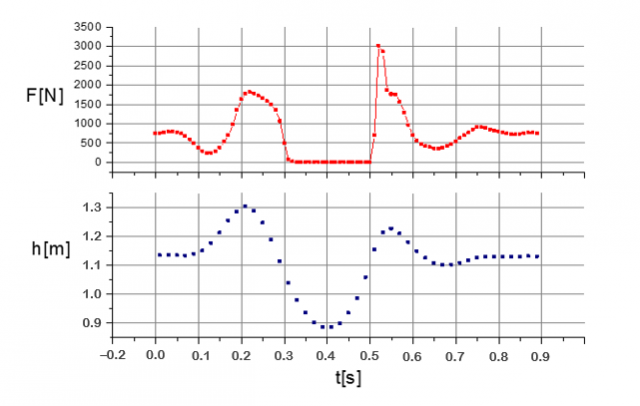

A vertical jump from a standing position is performed by first squatting, immediately pushing out of the squat, and bouncing. The height of the jump is measured with an ultrasonic tracker, which is attached above the head of the jumper during the measurement, and the force of the base with a push plate - an electronic scale (see Figure 1). The meters are connected to a computer via an interface. The result of the jump measurement is shown in Figure 2 in the form of a graph  and
and  .
.

Figure 2: Graph of ground force and displacement of the top of the jumper head as a function of time
Based on the graphical display of the measurement, answer the following questions:
The jumper initially stands and rests on the jump plate. The weight of the jumper is equal to the reaction of the base. What is the mass of the jumper?
During rest on the jump plate, the force is constant. When squatting, the force first decreases and then increases. Why?
The push-off begins when the jumper leaves the lowest position of the squat. How long does a push last?
Describe the energy changes from the lowest squat position to the highest jump position.
Calculate the maximum potential energy of the jumper.
Evaluate the strength of the jumper's leg muscles.